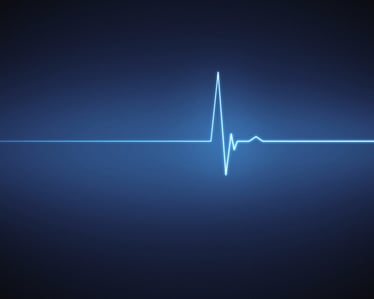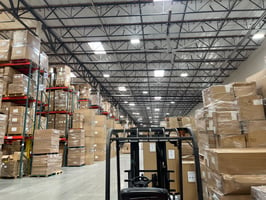Key Facts for States, OSHA’s Proposal, and How MacroAir Helps Compliance Is your business in...
Importance of a Heat Prevention Plan and the Role of HVLS Fans
As temperatures rise during the scorching summer months, workplaces become susceptible to heat-related issues that can negatively affect both employee well-being and productivity. Recognizing the significance of these challenges and implementing a comprehensive heat prevention plan is crucial. This blog delves into the various heat-related issues encountered at work and presents an effective heat prevention plan, including the strategic use of HVLS (High Volume, Low Speed) fans.
Possible heat-related illnesses

Let’s start with what it means when you hear the term heat-related illnesses. This term refers to health conditions that occur due to prolonged exposure to high temperatures, along with high humidity levels, and physical exertion. These illnesses can range from mild discomfort to severe and life-threatening conditions. Some common heat-related illnesses include dehydration, heat cramps, heat rash, heat exhaustion, and heat stroke.
Signs of heat-related illnesses

Recognizing the symptoms of heat-related illnesses is the first step toward prevention. Early signs such as excessive sweating, dizziness, nausea, confusion, increased heart rate, weakness, and elevated body temperature should not be ignored. If these conditions are not promptly addressed they can lead to more serious implications including loss of consciousness or even death.Training employees to identify these signs is crucial for timely intervention and prevention.
What causes heat-related illnesses?

Heat-related illnesses at work can arise from a combination of many factors and can often worsen due to the environment and activity level. Some causes of these illnesses include:
High Temperatures
Exposure to high temperatures, particularly during extremely hot weather or in environments lacking proper ventilation.
High Humidity
High humidity levels can slow the body's ability to cool down through sweat evaporation.
Physical Exertion
Physically demanding tasks or activities without adequate breaks and hydration can lead to excessive sweating and dehydration.
Lack of Hydration
Insufficient fluid intake, especially in hot and humid conditions, can lead to dehydration.
Improper Attire
Wearing heavy or restrictive clothing that inhibits the body's ability to regulate temperature and prevents sweat evaporation can contribute to heat-related illnesses.
Inadequate Rest
Insufficient rest periods, especially in high-temperature environments, can prevent the body from recovering and cooling down, increasing the risk of heat stress.
Limited Shade and Break Areas
Lack of shaded areas and designated break spaces can prevent employees from taking necessary breaks to cool down and hydrate.
Inadequate Ventilation
Poorly ventilated workplaces can trap hot air and hinder air circulation, intensifying the heat stress on employees.
Health Conditions
Certain pre-existing health conditions, such as heart conditions, obesity, and respiratory issues, can make individuals more susceptible to heat-related illnesses.
Lack of Awareness and Training
Insufficient knowledge about the risks of heat-related illnesses and preventive measures can lead to inadequate precautions, increasing the likelihood of these illnesses.
Preventing Heat-Related Illnesses

In order to prevent heat-related illnesses, set yourself up for success. Have a heat prevention plan in place, and follow the below recommendations:
- Stay hydrated by drinking plenty of water throughout the day.
- Take frequent breaks in shaded or cooler areas.
- Wear lightweight, breathable clothing.
- Avoid strenuous physical activity during the hottest parts of the day.
- Use sunscreen to protect your skin from sunburn, which can exacerbate heat stress.
- Implement cooling measures such as using HVLS fans, portable fans, and air conditioning.
- Be aware of the signs of heat-related illnesses and seek medical attention if symptoms are severe.
Understanding heat-related illnesses and their symptoms is crucial for both individuals and employers to ensure the safety and well-being of those working in hot environments.
How to help prevent heat-related illness

The right tools and equipment can make all the difference. The number one tool that needs to be developed needs to be a heat-prevention plan. We have provided one at the end of this blog for free; be sure to download it today. In addition to your prevention plan, we recommend the following:
- Wear industry appropriate personal protective equipment (PPE) to minimize heat buildup and discomfort.
- Implement a hydration station at work. These should be easily accessible water stations to encourage people to stay consistently hydrated.
- Provide shaded rest areas for employees to take breaks out of direct sunlight.
- Use HVLS fans to help circulate that air more effectively.
- Place portable fans strategically around your work area for localized cooling.
- Equip your space with ac units if possible.
HVLS Fans: A Game-Changer in Heat Prevention

MacroAir HVLS fans play a pivotal role in combating heat challenges. These large, low-speed fans create a gentle breeze that circulates air effectively across spaces. In fact, one 24 foot fan can effectively cover up to 22,000 square feet. This creates a cooling effect, leaving people feeling up to 15°F cooler.
Adding HVLS fans also helps to create even temperature distribution, preventing hotspots and maintaining consistent temperatures throughout the workspace. These big fans drastically increase air circulation. The breeze generated will help to minimize the accumulation of stagnant, hot air. The fans work with existing ac until to evenly move the air throughout. Most importantly, large fans will help to reduce heat stress on employees, enhancing safety, comfort, and overall well-being.
Creating an Effective Heat Prevention Plan

Following recommended tips and tricks along with a heat prevention plan is essential. Your comprehensive heat prevention plan should encompass education and training, strategies for staying hydrated, rest breaks, appropriate attire, and HVLS fan integration.
A well-structured heat prevention plan not only protects employees' health and safety but also contributes to better productivity and satisfaction at work. By incorporating tools like MacroAir HVLS fans, workplaces can effectively mitigate heat-related issues and create a comfortable and safe environment. Download our Heat Prevention Plan today and take proactive steps toward a cooler, healthier workplace.


